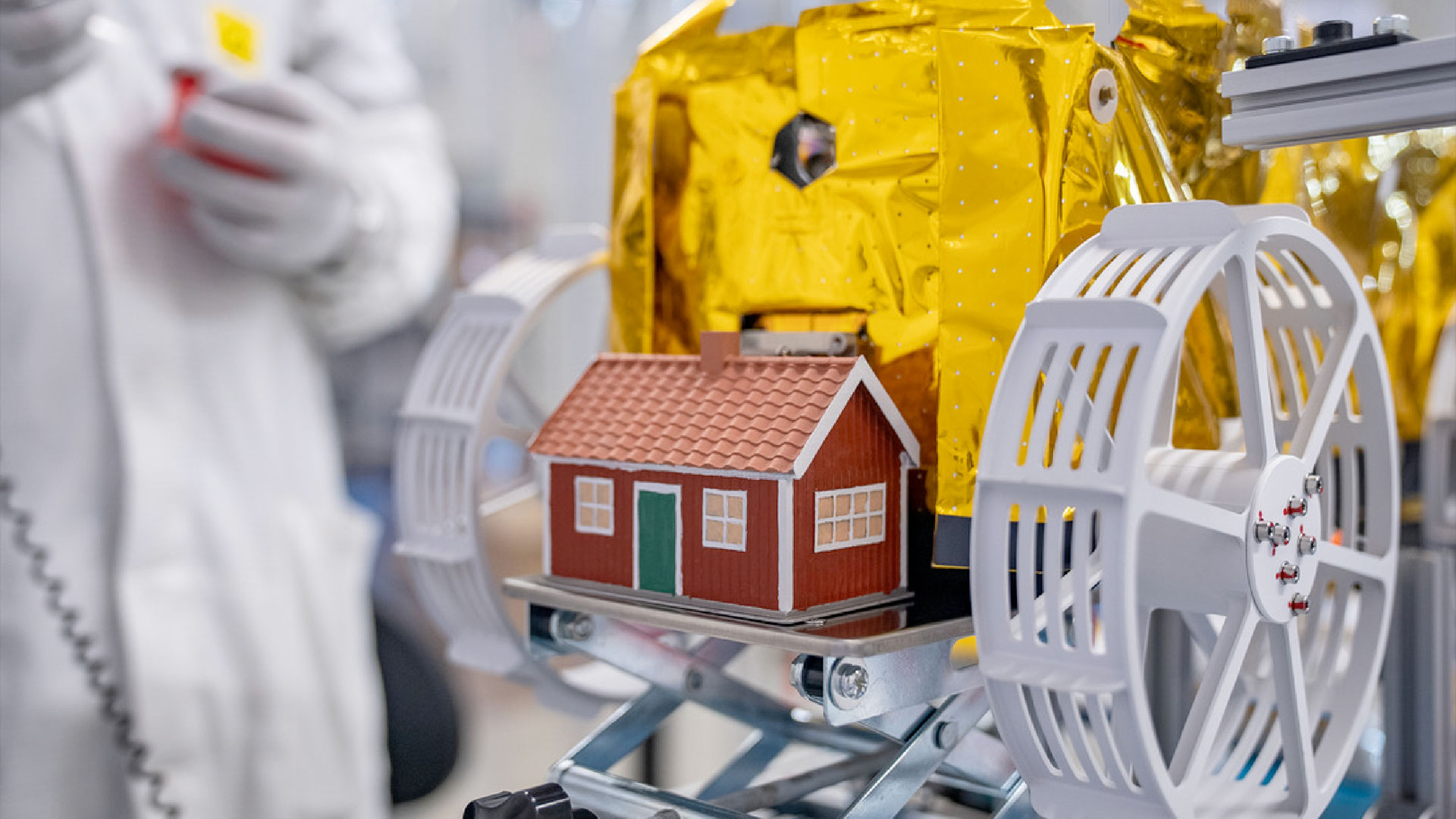Mikael Genberg's 'Moonhouse' Poised for Lunar Landing on June 5, 2025

On June 5, 2025, the dream of Swedish artist Mikael Genberg is on the verge of becoming a reality as his artistic creation, known as 'The Moonhouse,' prepares for its momentous lunar landing. This unique project, which Genberg has been nurturing since 1999, is set to make its debut on the surface of the moon aboard the Resilience lander, managed by the Japanese aerospace company ispace.
The 'Moonhouse' is a charming miniature replica of the classic red-and-white cottages that are a hallmark of the Swedish countryside. It is strategically mounted on the front bumper of a microrover named Tenacious, designed by ispace's European subsidiary. If Resilience completes its landing successfully, Tenacious will deploy from the lander and place the Moonhouse onto the gray lunar surface, introducing a vibrant splash of color to the otherwise stark landscape.
In a recent email interview with Space.com, Genberg elaborated on his vision, feelings, and what this landing would signify for him personally and for humanity at large. When asked about the genesis of his idea to place a house on the moon, Genberg explained, ‘Working as an artist is, in many ways, about trying to describe the world, life, and human beings from different perspectives. All culture is essentially that: describing and re-describing what it means to be here.’ He went on to illustrate how the image of a quaint Swedish house in the vastness of space encapsulates both survival and beauty, capturing a sense of profound longing and aspiration.
Genberg originally found the concept enticing yet daunting; he lacked funding, expertise, and connections to bring the idea to fruition. However, the idea persisted and grew over the years, bolstered by the unwavering support of friends and art enthusiasts. Genberg remarked, ‘Somehow, the concept managed to survive, and even grow, for 26 years, carried forward by its own poetry, craziness, and hardship and by the incredible support of people who believed in it.’
The artist expressed that the Moonhouse symbolizes both a shared achievement and a personal milestone. He described the emotional weight of potentially touching the moon with a house he painted in his own kitchen, stating, ‘It’s like putting my finger on that distant white disc in the sky. An impossibility that comes to life.’ He hopes that this small house in an expansive, empty realm will inspire people to reflect on humanity’s relationship with space and to appreciate the fragility of our own planet, often referred to as the 'Pale Blue Dot.'
As the lunar landing approaches, Genberg feels a whirlwind of emotions including awe, anxiety, disbelief, and a sense of childish happiness. With so much at stake and numerous challenges yet to navigate, he aims to remain grounded, acknowledging the excitement while staying present in the moment. 'Whatever comes next,' he added, emphasizing the unpredictability of space missions.
Regarding the significance of a successful landing, Genberg stated, ‘If it works, if the Moonhouse actually stands there on the lunar surface, I think it would be a moment of something extraordinary. Maybe more poetry than art.’ He envisions the Moonhouse as a cultural marker, representing humanity’s dreams, creativity, and peaceful intentions. He believes that its existence alone has already sparked conversations and creativity across the globe, with responses ranging from songs to children's drawings and poetry.
However, the looming question remains: what if the Resilience lander fails during its descent? Genberg admitted that while he would initially feel disappointment, he believes that with time, he would recognize the achievement of the Moonhouse project in the broader context of its journey. ‘Of course, I hope it lands safely. But I also accept that space missions are, by nature, super-risky. No matter what happens, the House will reach the moon. The only question is in what shape,’ he concluded, encapsulating the essence of artistic ambition intertwined with the unpredictable nature of space exploration.





























